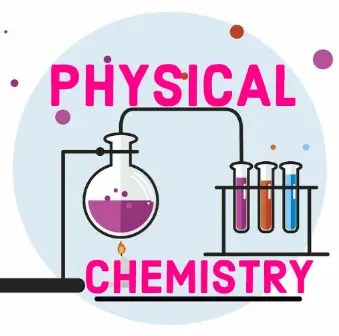Physical Chemistry: Main Applications And Sub-Branches

Definition of the field of physics-chemistry:
Physics chemistry is a science that is responsible for investigating the phenomena studied by both sciences using the different techniques of atomic and molecular physics, as well as solid-state physics.
Although they are found at the interface between physical chemistry, it present differences with respect to physical chemistry due to the simple fact of focusing on the elements and theories characteristic of physics.
In physics-chemistry, changes occur in various sciences such as chemistry, physics, electrochemistry, thermodynamics, electrochemistry, and quantum mechanics, where mathematical functions tend to represent interpretations at a molecular and atomic structural level.
Likewise, we find that the physical and chemical changes that occur in temperature, thermal pressure, heat, work in the systems, liquid, solid, or gaseous state, are related to the interpretations of molecular interactions.
In modernity, physics-chemistry has its bases in pure physics and its areas of study are precisely thermochemistry, kinetics, quantum chemistry, chemistry, mechanics, statistics, electrochemistry, magnetochemistry, and state chemistry. solid and surfaces.
What does a physics chemistry professional do?
The physical-chemistry professional is the one who investigates the mica of ions, free radicals, clusters, molecules and polymers. Among these areas of study we know that they include the quantum behavior of chemical reactions, the solvation process, the flow of inter and intra molecular energy and simple entities such as quantum dot formulas .
To know what a physical chemistry professional does , we must understand that these people use a variety of spectroscopic techniques to better understand hydrogen bonding, electron transfer, the formation and disintegration of chemical bonds, the formation of nanoparticles and the reactions chemicals and their balance .
In favor of studies, theoretical chemists create simulations of the molecular processes investigated in these experiments to explain the results obtained and subsequently guide future research.
All this is done for certain purposes, the first being to understand the structures and reactions at the level of quantum mechanics, the elucidation of the structure and reactivity of ions and radicals in the gas phase, the discovery of exact approximations to make the physics of physical phenomena computationally accessible.
Main applications of Physics Chemistry:
The Physical Chemistry professional works in a fairly extensive work environment, which covers areas of knowledge or practice. Its wide career opportunities are due to the fact that the application of physical chemistry is essential to carry out different industrial processes or create products in an optimal way.
To give you a better idea of where physical chemistry can be applied, here is a list.
- Research and experiment laboratories .
- Electric power generation plants:
- Heating and cooling systems.
- Fuel cells.
- Wind turbines.
- Turbines.
- Tidal power plants.
- Combustion processes.
- Automovile industry.
- Energy transformations of various biological systems.
Branches or subdisciplines of physical chemistry
The field of physical chemistry encompasses various disciplines that use physical laws to elucidate chemical reactions and bonds in laboratory experiments . Next, we bring you the disciplines that are important symbols within physical chemistry, this sample not being an exhaustive compendium of all the branches of this science.
Thermochemistry
This section of physical chemistry has as its main objectives to measure the heating of substances and the establishment of heat in phase changes . At the same time, study and identify the thermal effects of chemical reactions with theoretical physical and chemical parameters.
Corrosion of metals
This is one of the most applied fields of physics-chemistry , since I study the corrosion of metals and material due to interaction with the environment .
Generally, deterioration is due to an alteration of the substances found in the materials due to contact with the environment, producing thermodynamic instability. Its importance in everyday life is in being able to manufacture more resistant construction materials or prevent dangers based on the effects of the environment.
Photochemistry
In this section, the chemical reactions that occur through the interaction of light are analyzed and studied; in the light range that goes from ultraviolet and infrared rays. In many of the environmental processes, and those related to us, light plays a crucial role, such as photosynthesis, the ozone layer or our ocular adaptation. Becoming one of the most important branches of physics-chemistry.
Crystal chemistry
As its name indicates, this section is responsible for the atomic arrangement and chemical bonds found in crystals, as well as the physical and chemical properties of the structures and their interaction in the environment. It is also responsible for analyzing organic or inorganic compounds in glass production.
Conclusion
Physical chemistry explores the principles governing the behavior of matter and energy at the molecular and atomic levels, combining concepts from physics and chemistry to understand and predict chemical phenomena.


